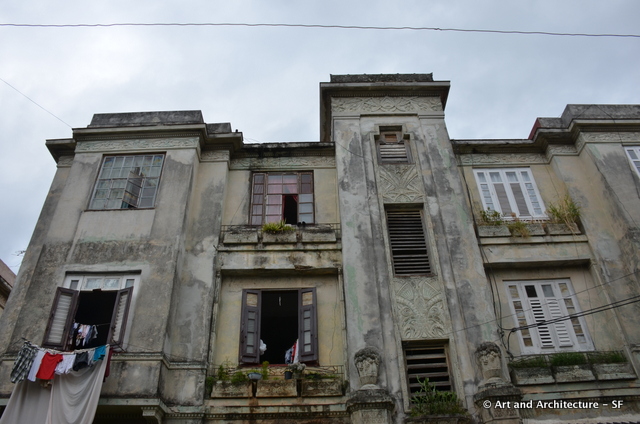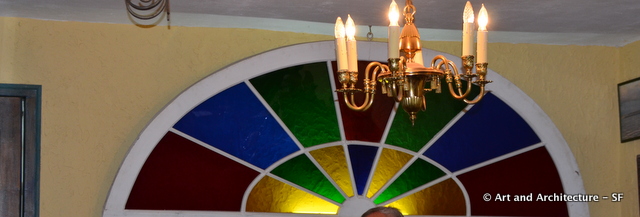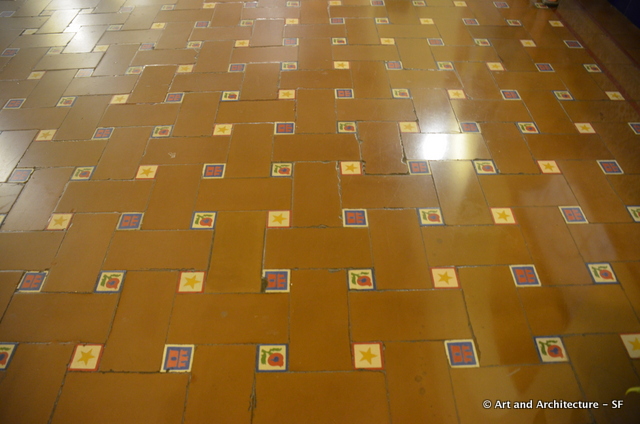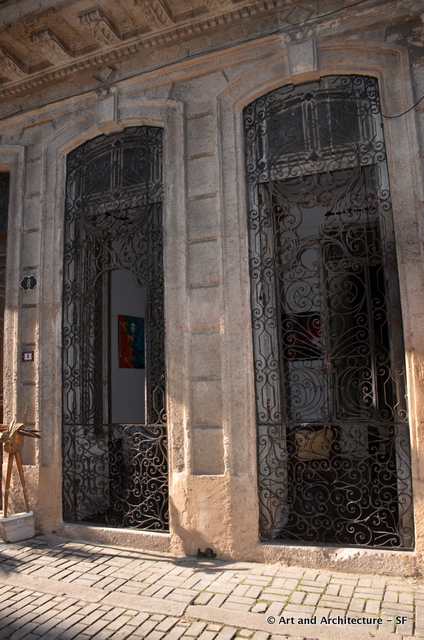 The architecture of Cuba is filled with glorious, and rapidly deteriorating buildings.
The architecture of Cuba is filled with glorious, and rapidly deteriorating buildings.
Each large city in Cuba had its own distinct style but overridingly the architecture of Cuba is the definition of fusion. The 16th and 17th century was dominated by the Spanish, but you also have the Moorish influence from Granada. These all show touches of baroque and classical, and yet I was surprised to also see much Art Deco and Art Nouveau.
Fine metal work is prolific, not just in the profusion of doors and grates but in lamps and lamp holders, door knockers and door knobs and corner guards protecting entryways from carriage wheels.

Fanlights, called mediopuntos, were designed to light rooms that opened off of a central enclosed patio.
In the countryside you will find colored glass over doorways and in high windows everywhere. It is odd, because it looks like a bad attempt to mimic stained glass windows carried out without much artistic thought. When you arrive in Havana you see the actual windows and realize how glorious the work is when done right. These glass windows are a distinct feature of Cuban architecture, and were described by Cuban writer Alejo Carpentier as “an interpreter between man and the sun”. The windows are set as to be enjoyed more from the interior than the exterior.

Ceramic tiles were shipped from Spain by the thousands, the more durable colored concrete tiles were used for flooring.
You can see remnants of what was likely a large use of decorative tile on floors and walls in some of the better preserved buildings. According to some, Cuba has the largest amalgamation of 19th century Spanish Valencia tiles
Outside of the cities you begin to see a large Caribbean influence in the architecture of homes.
 In the countryside when visiting the coffee plantation we were able to view the construction of the typical farm home. Berto and Maria Colorado’s home is clay. While less expensive it is always dusty and this type of construction does not hold up well in hurricanes. Their son’s home, however, is wood, the problem being, getting wood in a country that is trying so hard to keep people from cutting down trees.
In the countryside when visiting the coffee plantation we were able to view the construction of the typical farm home. Berto and Maria Colorado’s home is clay. While less expensive it is always dusty and this type of construction does not hold up well in hurricanes. Their son’s home, however, is wood, the problem being, getting wood in a country that is trying so hard to keep people from cutting down trees.

Characteristics of Havana architecture include Media Ponto Arch, Stained Glasss and long balconies.
The blue color is Havanian Blue .

The barrotes or rejas of the 18th century (seen here) were replaced in the 19th century by grilles decorated with ornamental motifs in the architecture of Trinidad. They were traditionally draped inside with a cloth or leather curtain called a guard-plovo to provide privacy and help keep the dust out.
Architecture in Cuba cannot be discussed without touching on the Russian Influence.
The Embassy in Cuba is without a doubt the most striking and overwhelming example. This constructivist building was completed in November of 1987, and designed by architect Aleksandr Rochegov.
There is also the Russian brutalism influence, but if these buildings were built as badly in Cuba as they were around the world, they will not be with us long.








